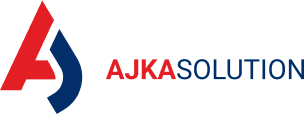The sins in digitisation
Regardless of the size of the company, there is increasing pressure to digitise all its processes. Digitisation is not just about using CRM, Teams or the new SAP. It is literally pouring in on companies from all sides. And you know, the more something is pushed in companies, the more emotions are aroused. That’s when digital loses its playfulness and potential for success at first. But there are even more sins…
Before you go digital again
There are several obstacles to effective business management towards successful digitalisation.
- Lack communication in teams
Lack of communication in teams is a very common problem. It’s rarely dealt with straight away. In the long term, it results in poor teamwork and reliance on individuals.
But the boss has to work with the whole team. Surround yourself with people who have deeper knowledge than yourself and listen to those people. The benefit of open communication, in addition to leading change together, is the natural discussion of fears of impending change, fear of being fired, and suggestions for process improvement.
It is up to the company to establish a specific form of internal and external communication. For example:
- what is to be communicated,
- when to communicate,
- who to communicate with,
- how to communicate,
- who should communicate.
- Lack of real-time information
Situations where team members are unable to share information effectively can result in:
- delays in completing tasks,
- incorrect decisions,
- employee dissatisfaction.
Information and data is a vital asset for any company. Only with relevant information can analysis be carried out and evaluated.
- Lack of long-term solutions
The vision, goals and mission give the company a clear direction for the future. Long-term goals are then developed into short-term goals. If the company sticks to them, employees can see what steps they are contributing to achieving them.
“It happens that we come to a company and hear from the management that the digitasion is a pain for them. On closer audit, we usually find that they have one of the above ailments. Sometimes even all three at the same time.” Aleš Kuboušek shares his experience as an interim manager. From the above, you can probably guess that the problem is not digitisation itself. Digitisation hurts if it is set on poorly built internal foundations. But the problems with digitisation actually start somewhere other than in the technical realm.
So how to get started with digitisation
An outside view and a third party opinion helps alot. We often encounter operational blindness in companies. These key issues are not known at the highest level in company structure of many companies. They don’t see them. AJKA-SOLUTION does not only point out these shortcomings in digital and corporate audits of companies. Yet We have not seen a company that does not have future potential, exceptional skills or know-how.
Overcome the sins of digitisation.
- Set up your processes first. Digitalization deployed on dysfunctional and stalling processes will not bring the expected effect. Improvements, speed-ups and higher quality output will not reach their potential..
- Banish the fear of financially and time-consuming digitisation. You can go digital step by step. Digitalisation doesn’t mean changing everything at once. Feel free to wait until the time is ripe for new networks, IoT, connected machines, energy monitoring, ecology.
- Let´s take digitisation as a project. Set your goals, steps you will take along the way. Get advice if you don’t know how to digitise, what course to expect.
- Digital cannot solve your problems. It can’t do it on its own. So set yourself steps and goals.
- Keep going. Digitalisation doesn’t end when you cross one milestone. It goes on and on. As technology advances, companies must review their processes and incorporate new elements and optimise.
“Deploy sophisticated solutions later. Just like the WorkSys platform. With it, you can connect the company to publicly available data like energy prices. You can then balance energy consumption, heat metering and production machines in the company,” adds Aleš Kuboušek.
The main role: data
If you still hesitate about taking the next step towards digital, think about the benefits. Digitisation is work with data. Connecting and linking them allows companies to analyse data with each other, find new connections and correlations, and find answers to a wider range of questions.
It has a major impact on communication in all directions:
- improving communication in the company, information transfer, availability of information between teams, but also prevents misuse of information in places where it does not belong.
- transparent communication with customers. Digitisation enables the automation of communication, but also personal relationship management.
- facilitates a third direction of communication; towards suppliers and thus also more efficient management of warehouse and material management
Even working with an external company doesn’t have to mean a progress. The basis of any cooperation must be a consultation that maps the basic needs of the company. The profitability of the cooperation is also mapped. Management’s ideas about change are not always what the consultant finds out and sees. At AJKA-SOLUTION, we have experts with long-term experience in the industry. Therefore, we are able to solve various requirements and needs to implement almost “tailor-made solutions”.
